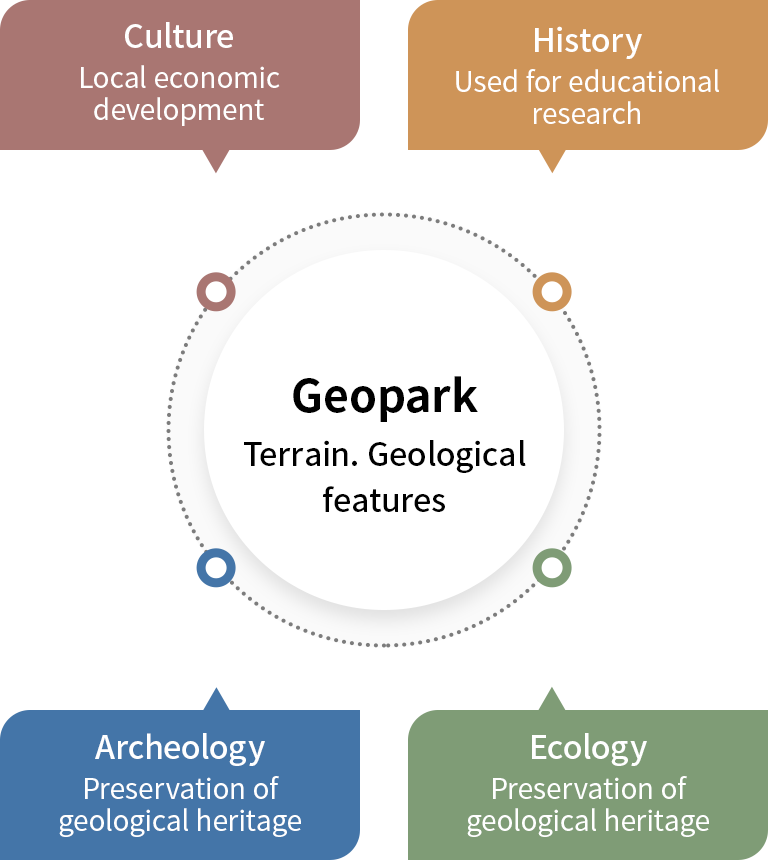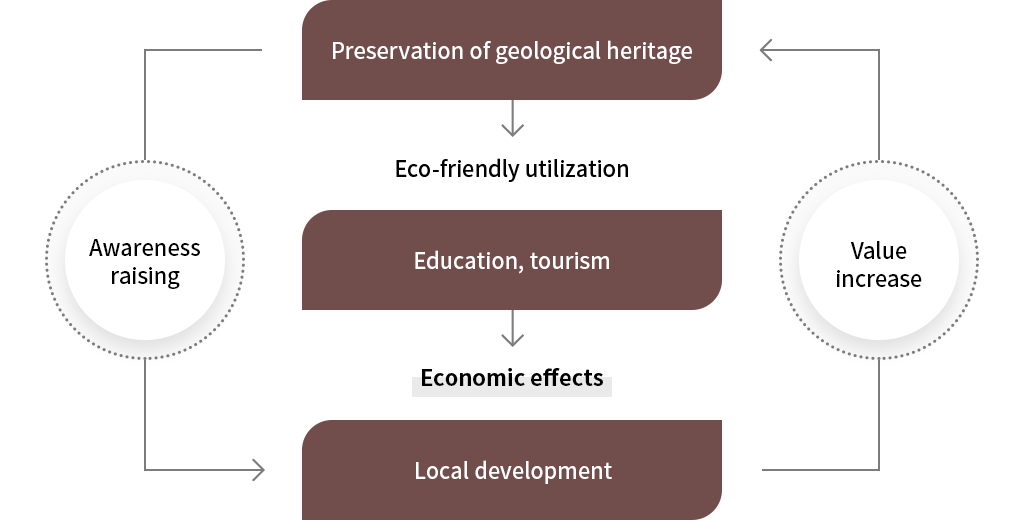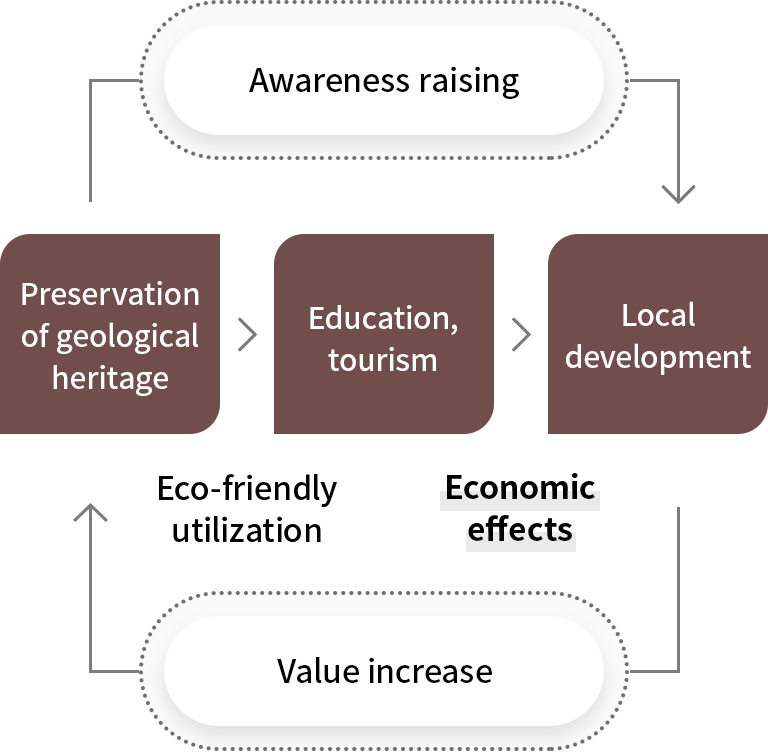Korea’s National Geopark


지질공원(지형과 지질)은 문화, 역사, 고고, 생태적으로 영향을 미칩니다.
문화는 지역경제 발전적으로, 영사는 교육연구에의 활용적으로 고고, 생태적으로는 지질유산의 보전에 영향을 줍니다.
다음단계


지질공원의 지진유산 보존으로 친환경적 활용을 통해 교육·관광을 함으로서 경제적 효과가 발생하고 궁극적으로 지역 발전에 이바지 합니다. 지역발전으로 지질공원의 가치가 증대되고, 지질공원으로 인해 지역이 발전 될 수 있다는 인식의 변화로 선순환하게 됩니다.
다음단계
Sustainable coexistence of humans and nature
Development strategies and plans for involving local community members are important.
Definition of National Geopark
Parks with significance from an earth science perspective, certified by the Minister of Environment (Subparagraph 2 of Paragraph 4 of Article 2 of the Natural Parks Act) for preservation as areas with outstanding natural beauty and educational and tourism value.
※ National Geoparks and Global Geoparks are similar regarding certification procedures, evaluation, management structure and operation systems.
Conditions of and necessity for national geoparks
“Geoparks” do not refer only to geological features. A key factor is people[local residents]-focused activities. ”
Managed by local residents, Geoparks, with various boundaries and areas, preserve geological heritage for education and tourism purposes and to promote sustainable development of regions, as well as biology, archeology, history and culture.
Comparison of features of national parks, geoparks and other protected areas
*Please move left and right to check the contents.
Comparison of features of national parks, geoparks and other protected areas
| Classification |
National parks |
Geoparks |
Other protected areas (E.g., natural monuments, etc.) |
| Extent of regulation |
Very strong |
Almost none |
Very strong |
| Financial support |
High level of support |
Low level of support |
Varies depending on circumstances |
| Selection method |
Designation |
Certification |
Designation |
| Deregulation method |
Heteronomous
(For the military purpose and that of public interest, and due to natural disasters and lack of standards for designation) |
Autonomous
(Voluntary non-compliance or recertification cancelled) |
Heteronomous
(Application of concerned regulations permitted or lifted.) |
| Management principle |
Preservation > use |
Harmony of preservation and use |
Preservation > use |
Standards for certification of national geoparks(areas allowed to apply)
Legal basis: Paragraph 3 of Article 36 (certification of geopark, etc.)
- Areas with significance from an earth science perspective and rare natural features of outstanding scenic value
- Areas of high preservation value due to outstanding geological features, archeological, ecological and cultural elements
- Areas that can promote local economic development through preservation and utilization of geological heritage
- Areas with geological attractions or historical relics within geoparks and in harmony with natural landscapes, presenting preservation value
- Areas suitable for matters required and announced by the Minister of Environment to certify geoparks
Certification period
Four years from the date of announcement (reevaluation every four years)
For Global Geoparks aiming for preservation and utilization of geological attractions, unlike national parks, there are no private property right infringement-related issues nor restrictions on development.



